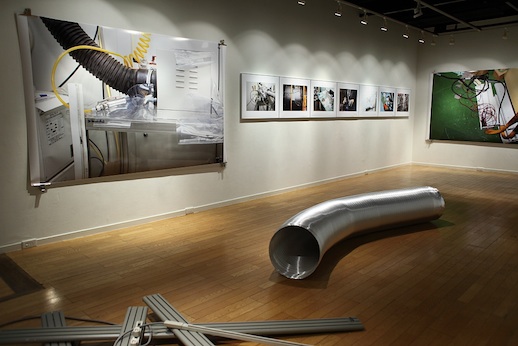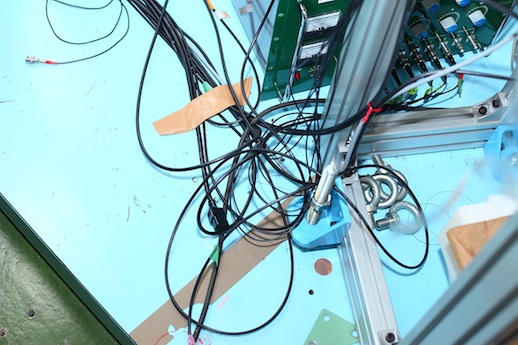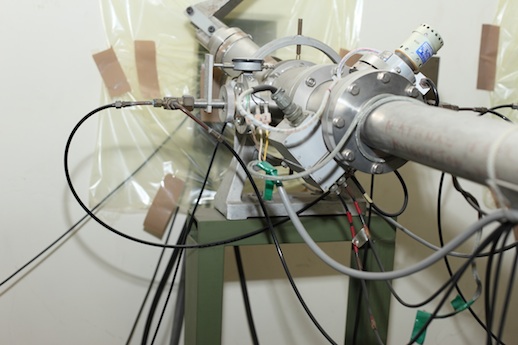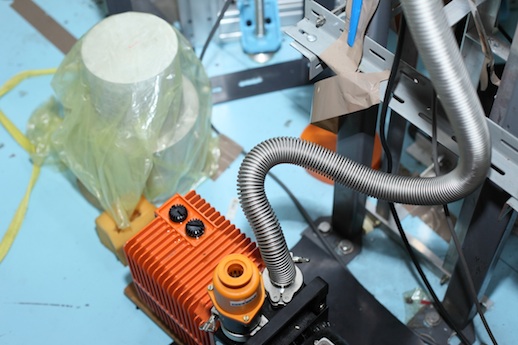Un-decodable Photography
In one of Jorge Luis Borges’ stories, he writes from the perspective of an Aztec priest locked in a Spanish jail cell with no hope of release. A beam of light enters his room once a day, allowing him to catch a brief glimpse of a jaguar in the next cell. Eventually, he recalls a prophecy that, during creation, “the god” had written a sentence in such a way that “it would arrive at the farthest generations, untouched by chance.” He comes to realize that this sentence could have been encoded in the skin of jaguars, and he spends many years studying the “arrangement and configuration of the blotches” of the animal next to him. This activity—a kind of looking that wants to become reading but can’t—is similar to what Naoyuki Hata has done with his most recent series, “Pelletron new no.4,” on display at Guardian Garden until February 23.

Of course, Hata is not an Aztec priest, but a Japanese photographer, currently studying at Amsterdam’s Gerrit Rietveld Academie. His current work was shot at the Research Laboratory for Nuclear Reactors at Tokyo Institute of Technology. At first, I unthinkingly wrote that his work “documents” the laboratory, but that couldn’t be any farther from the truth. The photos are all close-up images of scientific junk which will mean absolutely nothing to a lay observer. In these photos you can see wires, tubes, switches, cords, unidentifiable plastic sheeting, duct tape, cardboard boxes, obscure whiteboard scribblings, bizarre discs, something I want to call “a turbine,” zip ties, wrenches, and a notebook on which “Pelletron New No. 4” (in Japanese) has been written in what appears to be whiteout. This list is not comprehensive. “So,” the impatient viewer no doubt wants to ask, “what does it all mean?”

Hata’s earlier work was much more conceptual in its production. In his series “Submerge Garden,” he took photographs through a bag of water he’d held in front of the camera, rephotographed those prints (sometimes under running water themselves), and then installed the rephotographed images so that they sat half on the wall of the gallery and half on the floor. This series won Guardian Garden’s “1_WALL” competition, which is why he’s putting on the current show. This time, though, he’s struck a simpler balance between his concept and images: in the brief text for the “Pelletron new no.4,” he suggests that the detritus he’s photographed could constitute a sort of language or code. This puts him in squarely in the position of Borges’ Aztec priest, attempting to read something which is essentially not readable. In the end, the priest comes to understand the language encoded in the jaguar’s skin, but only after a much greater revelation which makes understanding the jaguar-language trivial. Needless to say there are no such revelations forthcoming here: as a lay observer, I have no idea what these machines do, and I know that Hata doesn’t, either.

Taken on their own, there is probably no meaning to be gleaned from the individual photos in this exhibit. As a whole, though, “Pelletron new no.4” holds together as a collection, or system, of not-understanding. What that means we’ll leave aside for now, but the show is definitely playing with the audience’s expectation of what they will “get” from a show of otherwise rather straight photography. The actual cables and tubes that are strewn about the gallery space might also be a kind of joke, to fool the audience into thinking that they’re going to grow “closer” to this technology. It’s highly doubtful that these photographs will augment anyone’s understanding of science, though. If anything, the exhibit seems more likely to prompt a reflection about how poorly we might understand the machines which are, in some sense, responsible for our well-being.

Dan Abbe
Dan Abbe



